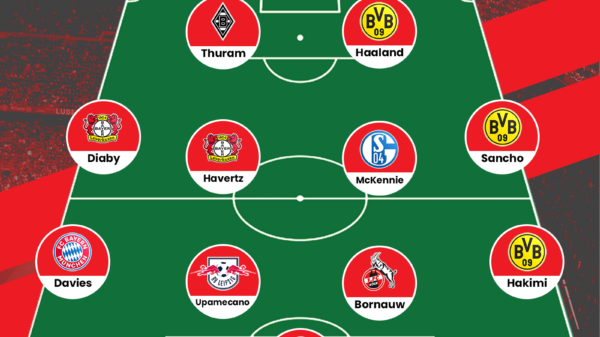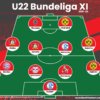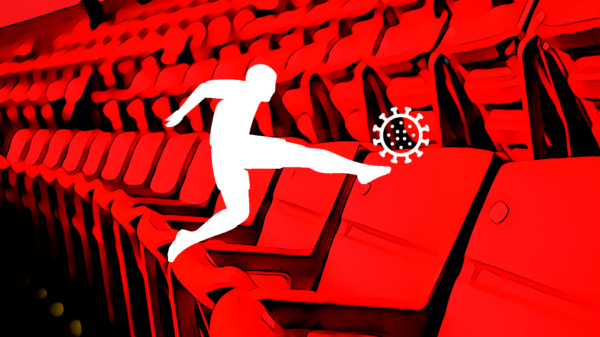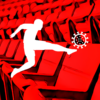Rishad Bharucha writes a detailed tactical analysis of the Bundesliga match that ended Dortmund 4-1 Mönchengladbach.
Dortmund (4-2-3-1): Weidenfeller – Piszczek, Sokratis, Bartra, Schmelzer (c) – Ginter, Sahin (Weigl 36′) – Dembele (Mor 88′), Castro, Reus (Pulisic 78′) – Aubameyang
Gladbach (5-2-2-1): Sommer – Korb, Christensen, Strobl, Elvedi, Wendt – Kramer, Dahoud (Vestergaard 73′) – Hazard (Johnson 78′), Stindl (c) – Raffael
Thomas Tuchel was critical of his team’s showing after their 2-1 defeat at Eintracht Frankfurt, suggesting that the players were technically, mentally and tactically deficient on the day. After a win over Bayern Munich and the demolition of Legia Warsaw in the Champions League, Dortmund found themselves in 7th place before the start of their home fixture against Borussia Mönchengladbach. In contrast, Borussia Möchengladbach came in to this fixture having won just one game in sixteen away from home in the Bundesliga. They had managed to keep one clean sheet away from Borussia-Park since the start of the season, and their last victory at the Westfalenstadion came in 2014.
Static block defending from Mönchengladbach
From kickoff itself, the tone of the game was set with Gladbach visibly lacking the desire to close Dortmund down while the home side kept tidy possession of the ball. Initially it seemed like they might be ready to sit back, let Dortmund play and hit the home side on the counter attack. A goal in the 6th minute seemed to relax the away side, but that was short-lived when Aubameyang struck back a minute later. The Gladbach players maintained a reasonable shape to cut off spaces early on, that was enough to push the Dortmund defenders to pass sideways. However, instead of shifting like a pack of wolves to close down space created in the middle of the field as Dortmund moved the ball wide, individually the players were static within the block of defence they had created.

Dortmund defender has a simple first pass option to the fullback available and their central midfielders are open for the second pass.
The result of this lack of impetus to close down the ball was that the success of forcing Dortmund to pass sideways was short-lived. A pass from Soktratis to Piszczek might have been followed by a back pass to Sokratis and eventually to Weidenfeller, if the Gladbach players applied a bit more pressure. Instead Dortmund were able to use the back pass to a center back like Sokratis to exploit space created by simply drawing the Gladbach midfielders away from their nearest Dortmund counterparts allowing Ginter, Sahin and later Weigl to see plenty of the ball.
Dortmund’s patience and clinical finishing
Borussia Dortmund’s possession game under Thomas Tuchel has developed into a style of passing that is patient yet urgent. This means that there are times where the ball will be moved around on the ground smoothly and with patience till the required space is created, as well as times where a pass backwards is followed by a first time long pass to the wing or some distance away from the center of the field. As a result, this did give Gladbach a few opportunities to create a quick transition, but they were poor in its execution. The central midfielders did not have much trouble getting the ball out of the back, but the real clinical play closer to the box involved summer signing Osmane Dembele and Gladbach old boy Marco Reus, who were both excellent on the day.
Dembele in particular was at his skilful best, taking on the Gladbach’s left wing and drawing several fouls throughout the game. His 1v1 dribbling skills were second to none on the field and combined with his pace, he was more than a handful for the opposition. In addition to showing the qualities he is already known for, what made his display particularly eye-catching was his clinical passing behind the defenders and the resulting combination with his teammates. This was not something most people expected from the 19-year-old Frenchman, and he capped off his performance with a goal that involved excellent shifting of feet before a clinical finish into the bottom corner.
Dortmund’s defensive frailties
Little details are often the difference between teams that finish first and those that can only settle for Champions League spots. For Dortmund’s fluency and quality in attack, they were unable to put in a particularly commanding defensive performance in this game. While they managed to put eight goals past Legia Warsaw, they also managed to concede four to the Polish side. Piszczek was a noticeable weakness in this game and was given a tough time by Hazard and Stindl when Gladbach had their best attacking moments.
It might seem a little harsh to criticize Piszczek for being out of position and leaving a gap in the defence for the only goal Dortmund conceded, but it’s little details such as these that Bayern Munich have seldom had to worry about throughout their years of success. Like the rest of the Dortmund defence, he also had a hard time dealing with the ball over the top and behind the back four. Dortmund’s high line left them too susceptible to this kind of attack throughout the game, and against a top European side like Real Madrid, they would have to be careful against quicker opposition such as Ronaldo and Bale.
Overall, Borussia Dortmund had too much for Mönchengladbach and maintained their excellent record at home against them. The result leaves Dortmund in 6th place, and Thomas Tuchel’s side will certainly have to iron out defensive mistakes in order to build enough consistency to push for a Champions League spot. Mönchengladbach sit at 13th in the table, and under André Schubert at the moment, they look a far cry from the masters of verticality they were a few seasons ago.
Read all our Tactical Analyses here.
- Tactical Analysis: Schalke 0-1 Leverkusen | Sending off ruins Schalke plans - December 19, 2016
- Tactical Analysis: Dortmund 4-1 Mönchengladbach |Dortmund’s patience and clinical finishing - December 8, 2016
- Tactical Analysis: Wolfsburg 1-5 Borussia Dortmund | Tuchel’s men win emphatically - September 24, 2016





























































